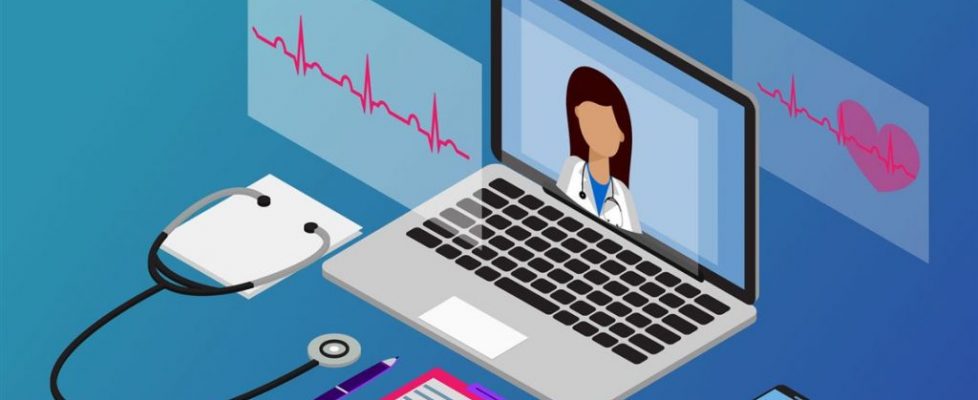Mahmood Kazemi: A remote revolution in diabetes care
The telehealth revolution has arrived, faster than even its most ardent proponents anticipated. Virtual doctor visits are on track to top 1 billion by the end of this year. That would be 30 times the figure from just three years ago.
People with diabetes have been among the most enthusiastic adopters of remote care. At the University of Pittsburgh Medical Center’s endocrinology department, telehealth visits for diabetes patients increased from eight per week pre-pandemic to 500 a week afterward. Virtual visits at the Cleveland Clinic’s Endocrinology and Metabolism Institute spiked 1,000% over the course of just one month.
Pairing widespread telehealth with new technologies that enable doctors and caregivers to monitor people with diabetes from afar could transform the way we treat the condition. Such remote monitoring has the potential to enable health care providers to intervene quickly if problems arise — and potentially help people with diabetes avoid expensive, painful complications.
That benefits those grappling with the condition and the entire health care system, which shares in the savings.
People with diabetes are perfectly suited for telehealth. Many have self-monitored their glucose levels for years to ensure they’re within an acceptable range. Historically, they’ve done so by pricking a finger, squeezing a drop of blood onto a test strip in a meter, and then reading the meter.
New technology can render this fingerstick approach obsolete. Continuous glucose monitors allow patients to check their glucose levels through a wearable sensor that transmits data to an electronic device. CGM technology can “dramatically improve” patients’ ability to control their glucose levels, according to a study published in the medical journal Diabetes Technology & Therapeutics.
The latest CGMs can make truly remote care possible. For example, users of Abbott’s FreeStyle Libre 14-day technology can scan a small sensor worn on the back of their upper arm with a reader or compatible smartphone. The sensor automatically logs their glucose readings in the reader or an app, which then pushes the data to a doctor or caregiver through a secure, cloud-based digital ecosystem.
As a result, multiple people can help manage the care of someone with diabetes from miles away. For example, a person can use a caregiver app to keep an eye on the glucose levels of an elderly parent — and perhaps call if that parent needs to take action to get their glucose back in range.
A doctor, meanwhile, can log onto the cloud-based software to review weeks’ worth of patient glucose data. Having access to glucose data of patients can help make their doctors have better-informed decisions about that patient’s medication, diet, and exercise plans.
Remote monitoring programs can also help keep people with diabetes out of expensive clinical settings.
Medicaid beneficiaries with diabetes who participated in a remote monitoring program launched by New York City Health and Hospitals saw their A1c levels — that is, their average glucose levels over three months — decline 1.8%, according to a 2012 study in the Journal of Managed Care Medicine. That’s significant. A 1% drop in A1c is associated with a 12% decline in the risk of stroke, a 14% drop in the risk of heart attack and a 43% decrease in the risk of peripheral vascular disease.
“Continuous glucose monitoring with digital health tools has enabled me and my team to monitor patients while minimizing transmission risks,” said Dr. Joseph Aloi, an endocrinologist at Wake Forest Baptist Health in Winston-Salem, N.C. “That’s been crucial during the pandemic. COVID-19 can cause heightened risk for people with diabetes, so it’s important to minimize the risk of exposure for my patients and hospital staff.”
By giving people with diabetes greater control over their condition, remote monitoring can deliver significant savings. A study published in the Journal of Medical Economics last year found that a remote diabetes management program drove overall medical spending down by nearly 22%. That translates to monthly savings of $88 per person.
According to research published in June in the medical journal U.S. Endocrinology, self-monitoring glucose with the FreeStyle Libre 14 day system cost 61% less than traditional fingerstick testing for people with type 1 diabetes and those with type 2 diabetes on intensive insulin therapy.
Doctors and patients have embraced telehealth during the pandemic out of necessity. But they’re discovering that remote care powered by actionable data can result in better outcomes at lower cost, especially for people with diabetes. That’s why data-enabled telehealth will endure long after the pandemic passes.

